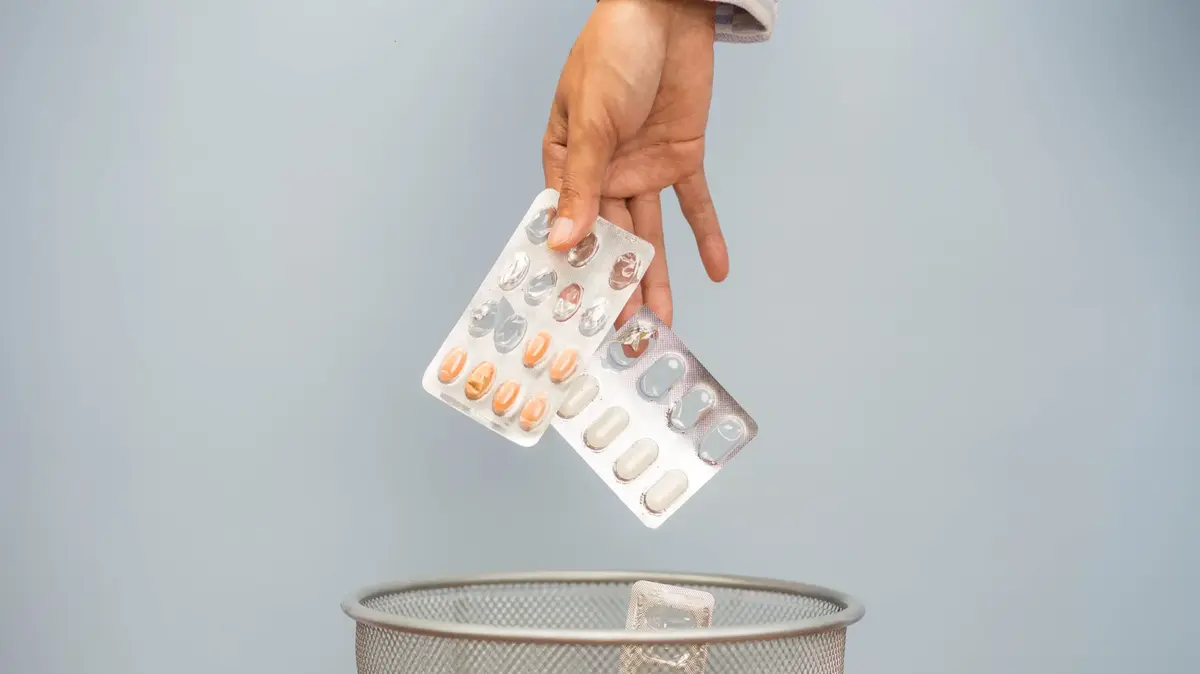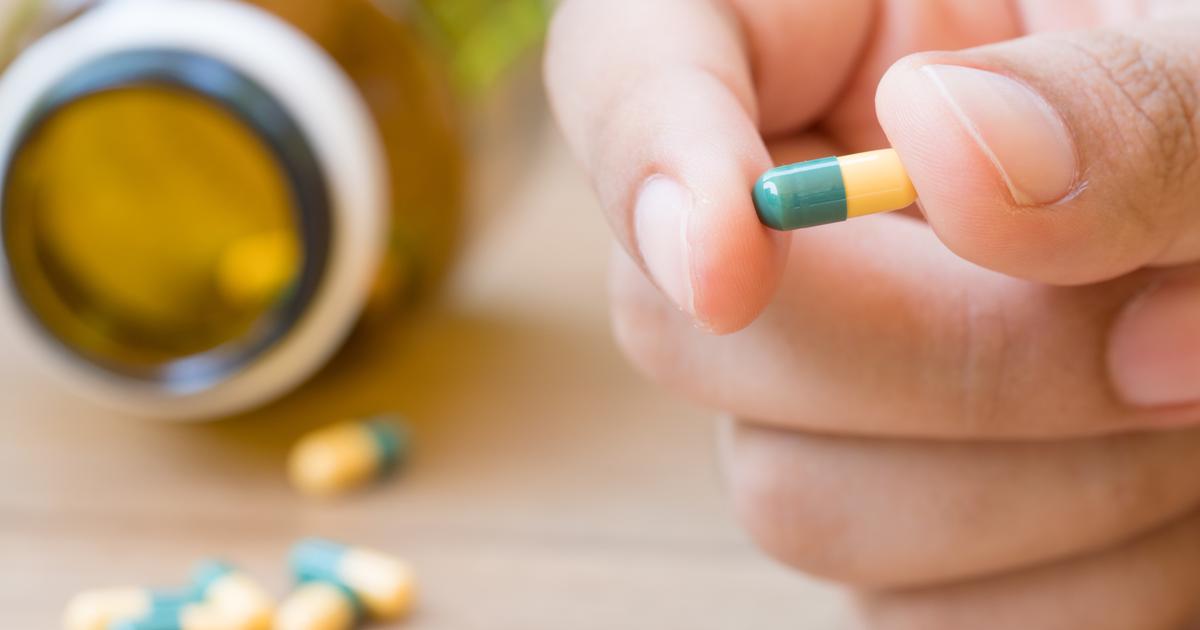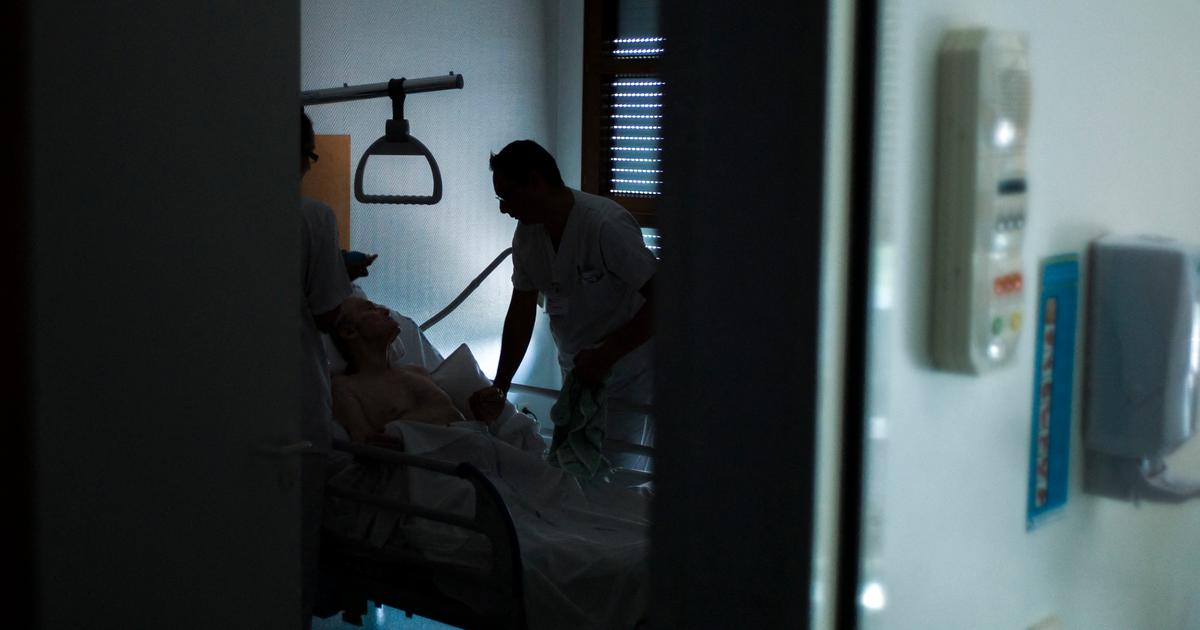FDA: 17 websites sell opioids illegally 0:33
(CNN) -
About one in three high school students who said they were abusing prescription opioids when surveyed reported attempting suicide, according to a study published Monday in the journal
Pediatrics
.
Previously, researchers reported that youth who had abused prescription opioids at any time were at increased risk for suicide.
The American Psychological Association defines that "suicide risk is generally indicated by the suicidal idea or intention" and a detailed plan for carrying it out.
The authors of the new study investigated whether the timing of adolescent prescription opioid abuse - whether current (in the 30 days prior to the survey), past, or never - affected its link to suicide.
The study used data from more than 13,600 responses from US high school students in the 2019 Youth Risk Behavior Survey from the US Centers for Disease Control and Prevention (CDC). in English).
The students answered questions about when and how often they had taken specific opioid pain relievers, either over the counter or in a different way than their doctors had directed.
Teens also reported whether and how many times they had seriously considered attempting, planning, or actually attempting suicide in the past year.
Study results
About 7.4% of the students reported that they had abused prescription opioids at least once in the past.
While 7.2% reported misuse one or more times in the last month.
"There are a number of factors that put young people at risk of abusing prescription opioids," study lead author Natalie Wilkins, a behavioral scientist with the CDC's Division of School and Adolescent Health, said by email.
"From a developmental point of view, adolescent brains have not yet fully matured, making them more susceptible to engaging in risky and impulsive behaviors, such as substance use."
advertising
Researchers found that current prescription opioid misuse, compared to misuse in the past or never, was more significantly associated with seriously considering the suicide attempt, making suicide plans, and feeling sad or hopeless at last anus.
Nearly 33% of students who reported misuse of prescription opioids today actually attempted suicide, compared with 19% of teens who reported misuse in the past and 6% of students who said they they had never misused an opioid prescription.
Why do students turn to opioids?
The study examined associations between prescription opioid misuse, suicidal tendencies, and symptoms of depression.
It is not yet fully known whether the misuse of prescription opioids can lead to suicidal tendencies and depressive symptoms or vice versa.
The authors also noted that a limitation of the study was that they did not know the levels of misuse by the students, for example if they occasionally misused it or had an opioid disorder.
Regardless, the reason teens start abusing opioids is a "nuanced and layered thing," said Dr. Lucien Gonzalez, chair of the American Academy of Pediatrics Substance Use and Prevention Committee, who does not participated in the study.
The misuse of opioids
The misuse could be due to alleviating the physical pain of a medical procedure, curiosity, socializing or succumbing to peer pressure, González added.
Some teens may misuse it to relieve tension, emotional pain, mental problems, or suicidal thoughts.
They may also want to feel the euphoria that they have heard from other people.
Some people don't like how opioids make them feel after surgery.
For others, the initial intention may have been harmless, but addiction occurs when casual use turns into opioids "because they really feel bad when they don't," said Amy Green, clinical psychologist and vice president of research for The Trevor Project, a crisis intervention and suicide prevention organization for LGBTQ youth.
"That can also cause a lot of fighting and suffering and feeling trapped, that you are caught between wanting not to use it and the actual fighting."
Regarding the link to suicide, substances such as opioids and alcohol can lower inhibitions, said González, who is also an assistant professor in the Department of Psychiatry and Behavioral Sciences at the University of Minnesota School of Medicine.
That can make some people less likely to fail to complete the suicide ideation or attempt.
Disparities between minorities
There were large disparities between the different students: female, black, Hispanic and lesbian, gay, bisexual, or unsafe teens currently abuse prescription opioids more than male and white teens.
Some of the minority groups also had higher rates of suicidal, sad, or hopeless feelings compared to the rates of white men and young men.
And the differences between heterosexual students and lesbian, gay, bisexual, and unsafe teens were extreme: 23.9% of lesbian, gay, or bisexual students and 14.5% of unsafe students attempted suicide, compared to 6, 4% of heterosexual adolescents.
12% of lesbian, gay, or bisexual teens and 11.5% of unsafe teens reported current misuse of prescription opioids, compared with 6.4% of straight students.
The biggest risks lesbian, gay, bisexual and unsafe teens face are not caused directly by their sexuality, but by the way some people treat them because of it, Green said.
"They are much more likely to experience discrimination, victimization (and) stigma because of their identity," said Green, who is also an adjunct assistant professor at the University of California, San Diego.
Green was not involved in the study.
"Those experiences lead to these internalized feelings of shame, stigma and depression, which tend to result in things like suicidal thoughts, misuse of prescription drugs, including opioids, to try to address the pain and suffering they feel," Green said. .
Support for LGBTQ teens
"When LGBTQ youth are supported and reaffirmed in their identities, when they have schools that recognize LGBTQ and have parents who accept them, they have a significantly lower risk of considering and attempting suicide," Green added.
White students reported misuse of prescription opioids in the past more commonly than students of other races or ethnicities.
White students seriously considered suicide and made a suicide plan.
But fewer white students reported suicide attempts.
The higher prevalence of suicide attempts among black and Hispanic students may be due in part to inadequate access to general mental health care and care that is culturally responsive to their identities and needs, Green observes.
Safety and Treatment of Prescription Opioid Misuse
"Because children can go from ideation to acting very quickly," parents should create a safe environment around children and adolescents who may have suicidal thoughts, González said.
Safely store items that could be lethal, such as firearms and pain or psychiatric medications.
A 2018 study found that teens are more likely to get prescription pain relievers first through family member's prescriptions, rather than through distributors or online sources.
Since teens can also misuse their own prescriptions, González recommended that parents administer medications, monitor access, and dispose of leftovers.
Signs that could be indicative of substance abuse or another problem include the following, according to González:
Constricted pupils
Confusion
Speak slurred
Short, shallow breathing
Unusual mood or mood swings (increased or decreased tiredness, unusually calm, depression or anxiety)
Skin marks or fresh puncture wounds
Weight changes (often loss)
Changes in friend groups
Isolation
Difficulty communicating
Lack of motivation
Changes in school attendance and / or performance
Aggressive behavior
Unusual disobedience
Appearance changes
Lower energy levels (or perhaps unusually higher)
Evidence of drug paraphernalia
Given the common reasons behind opioid misuse, how we keep students from "getting that pain" is crucial, Green said.
Seek help with the prescription opioid problem
"Mental health and substance abuse services in this country are not where they should be," Green said.
But there is some support available, regardless of ability to pay.
Parents and teens in the US can call 211 for information on local resources.
Some schools have health centers that offer substance abuse or abuse support services.
LEE: Depression and suicide: where to seek help in Latin American countries and Spain?
Parents should report any concerns to their child's pediatrician or take their child to a behavioral health doctor if the child is willing, Gonzalez said.
"Start by talking to your son, and you don't even have to start with 'I'm worried about drugs.'
It's' I'm worried about you.
Are you okay? '
Teens who feel connected to their families and schools have a lower risk of using substances and committing suicide, Wilkins said.
Parents can facilitate connection by communicating honestly and openly on sensitive topics and by respecting and considering the opinions, thoughts, and feelings of teens.
"When there is a conflict, be clear about goals and expectations," Wilkins added.
"But allow your (adolescent) input on how to achieve those goals."
Parents should facilitate healthy decision-making while encouraging their children to make their own decisions, Wilkins said.
Meeting your teen's friends, enjoying shared activities, and making a commitment to your teen's school can also help.
If you or someone you know is struggling with suicidal thoughts or mental health issues, call the National Suicide Prevention Line at 1-800-273-8255 to reach a trained counselor or visit the NSPL site.
Opioids Suicide













